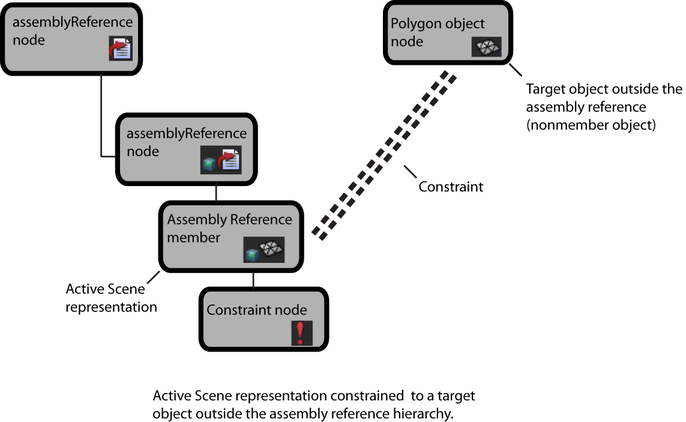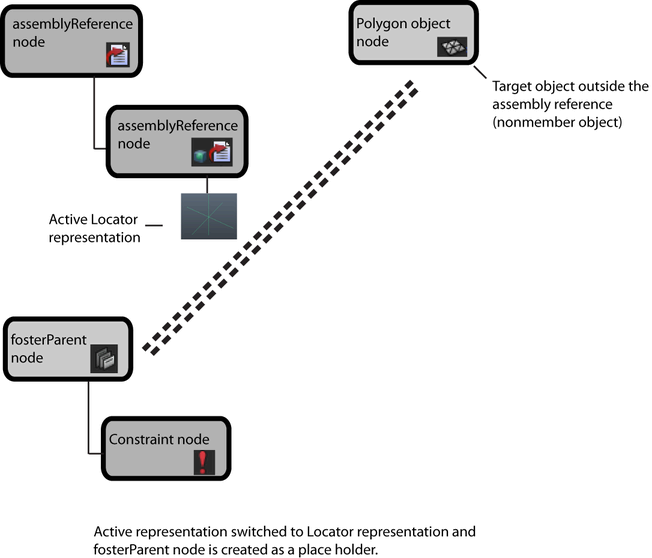You can switch constrained representations in the same way you switch unconstrained Scene, Cache, and Locator representations in your scene. However, the behavior of the constraint and its persistence when representations are switched depends on the assembly nodes position in the hierarchy. The following sections explain this concept in more detail.
Switching representations on a constrained assembly reference node
When a top-level assemblyReference node is the target or constrained object, the behavior of the constraint persists when representations are switched. For example, if the assemblyReference node is constrained to a target object, the constraint behavior does not change when assembly representation switches from a Scene representation to a Cache representation.

In this case, the constrained object (the assembly reference node) is not unloaded from the scene, which maintains the connections with the constraint node and allows the constraint behavior to persist.
Switching representations on a constrained nested assembly reference node or member
The persistence of the constraint behavior changes when you switch representations on an assemblyReference node or member that is:
- The constrained object and a child node of an assembly reference hierarchy, such as a Scene representation.
- The constrained object and an assembly reference member such as a Scene representation contained by a top-level assembly reference node.
The following diagram illustrates a constrained assembly reference member, which is also the active representation.

In this cases, switching representations causes the constrained object to be unloaded from the scene. Maya then creates a fosterParent node to temporarily stand in for the unloaded assemblyReference node or assembly reference member. The constrained object returns to its unconstrained location and behavior until the assembly reference node or member is reloaded.
The following diagram illustrates that the constrained assembly reference member is no longer the active representation.

This fosterParent node allows the connection to the constraint node to be maintained. The fosterParent node temporarily inherits the Transform values from the assemblyReference node. When the assemblyReference node is reloaded, the fosterParent node is removed. Modifications to the fosterParent node do not get applied to the assemblyReference node when it is reloaded.